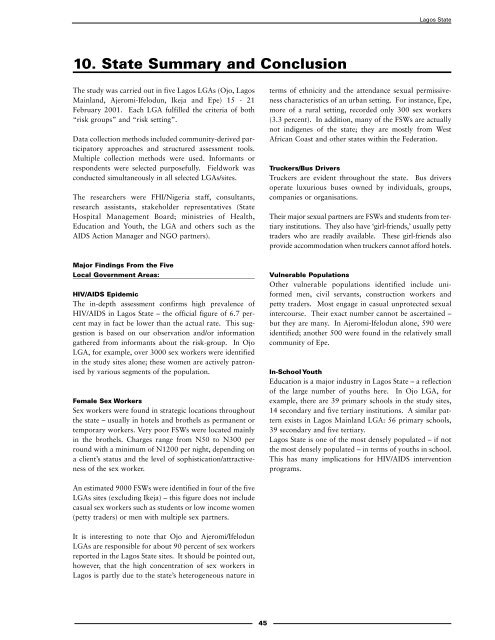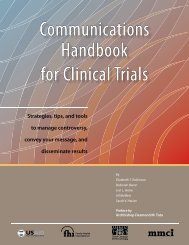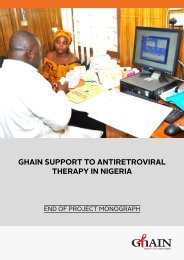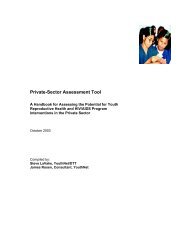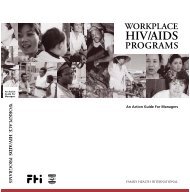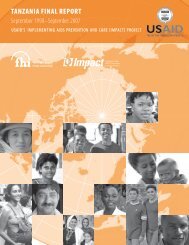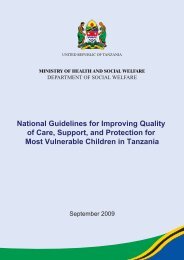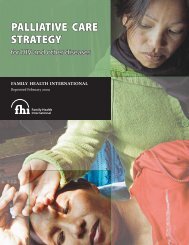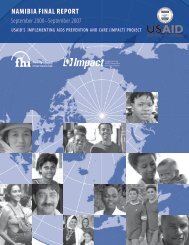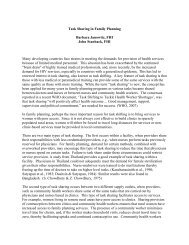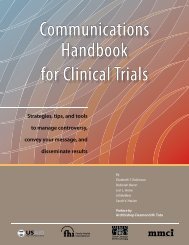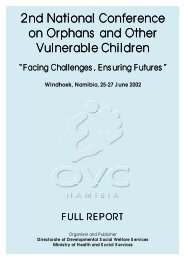Lagos State, Nigeria - Family Health International
Lagos State, Nigeria - Family Health International
Lagos State, Nigeria - Family Health International
You also want an ePaper? Increase the reach of your titles
YUMPU automatically turns print PDFs into web optimized ePapers that Google loves.
10. <strong>State</strong> Summary and Conclusion<br />
The study was carried out in five <strong>Lagos</strong> LGAs (Ojo, <strong>Lagos</strong><br />
Mainland, Ajeromi-Ifelodun, Ikeja and Epe) 15 - 21<br />
February 2001. Each LGA fulfilled the criteria of both<br />
“risk groups” and “risk setting”.<br />
Data collection methods included community-derived participatory<br />
approaches and structured assessment tools.<br />
Multiple collection methods were used. Informants or<br />
respondents were selected purposefully. Fieldwork was<br />
conducted simultaneously in all selected LGAs/sites.<br />
The researchers were FHI/<strong>Nigeria</strong> staff, consultants,<br />
research assistants, stakeholder representatives (<strong>State</strong><br />
Hospital Management Board; ministries of <strong>Health</strong>,<br />
Education and Youth, the LGA and others such as the<br />
AIDS Action Manager and NGO partners).<br />
Major Findings From the Five<br />
Local Government Areas:<br />
HIV/AIDS Epidemic<br />
The in-depth assessment confirms high prevalence of<br />
HIV/AIDS in <strong>Lagos</strong> <strong>State</strong> – the official figure of 6.7 percent<br />
may in fact be lower than the actual rate. This suggestion<br />
is based on our observation and/or information<br />
gathered from informants about the risk-group. In Ojo<br />
LGA, for example, over 3000 sex workers were identified<br />
in the study sites alone; these women are actively patronised<br />
by various segments of the population.<br />
Female Sex Workers<br />
Sex workers were found in strategic locations throughout<br />
the state – usually in hotels and brothels as permanent or<br />
temporary workers. Very poor FSWs were located mainly<br />
in the brothels. Charges range from N50 to N300 per<br />
round with a minimum of N1200 per night, depending on<br />
a client’s status and the level of sophistication/attractiveness<br />
of the sex worker.<br />
An estimated 9000 FSWs were identified in four of the five<br />
LGAs sites (excluding Ikeja) – this figure does not include<br />
casual sex workers such as students or low income women<br />
(petty traders) or men with multiple sex partners.<br />
It is interesting to note that Ojo and Ajeromi/Ifelodun<br />
LGAs are responsible for about 90 percent of sex workers<br />
reported in the <strong>Lagos</strong> <strong>State</strong> sites. It should be pointed out,<br />
however, that the high concentration of sex workers in<br />
<strong>Lagos</strong> is partly due to the state’s heterogeneous nature in<br />
45<br />
<strong>Lagos</strong> <strong>State</strong><br />
terms of ethnicity and the attendance sexual permissiveness<br />
characteristics of an urban setting. For instance, Epe,<br />
more of a rural setting, recorded only 300 sex workers<br />
(3.3 percent). In addition, many of the FSWs are actually<br />
not indigenes of the state; they are mostly from West<br />
African Coast and other states within the Federation.<br />
Truckers/Bus Drivers<br />
Truckers are evident throughout the state. Bus drivers<br />
operate luxurious buses owned by individuals, groups,<br />
companies or organisations.<br />
Their major sexual partners are FSWs and students from tertiary<br />
institutions. They also have ‘girl-friends,’ usually petty<br />
traders who are readily available. These girl-friends also<br />
provide accommodation when truckers cannot afford hotels.<br />
Vulnerable Populations<br />
Other vulnerable populations identified include uniformed<br />
men, civil servants, construction workers and<br />
petty traders. Most engage in casual unprotected sexual<br />
intercourse. Their exact number cannot be ascertained –<br />
but they are many. In Ajeromi-Ifelodun alone, 590 were<br />
identified; another 500 were found in the relatively small<br />
community of Epe.<br />
In-School Youth<br />
Education is a major industry in <strong>Lagos</strong> <strong>State</strong> – a reflection<br />
of the large number of youths here. In Ojo LGA, for<br />
example, there are 39 primary schools in the study sites,<br />
14 secondary and five tertiary institutions. A similar pattern<br />
exists in <strong>Lagos</strong> Mainland LGA: 56 primary schools,<br />
39 secondary and five tertiary.<br />
<strong>Lagos</strong> <strong>State</strong> is one of the most densely populated – if not<br />
the most densely populated – in terms of youths in school.<br />
This has many implications for HIV/AIDS intervention<br />
programs.


